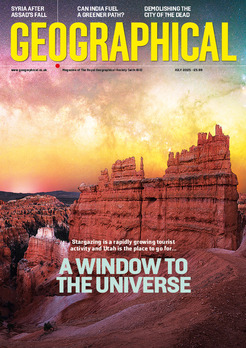
Two reports highlight that after years of decline in some parts of Africa, elephant populations have stabilised, and one of the reasons might be due to new ways of managing protected areas
By
It’s no secret that Africa’s elephant population is in trouble. Centuries of hunting, poaching and habitat loss have taken a dramatic toll with populations falling an estimated 98 per cent since 1500. Back then, there were an estimated 25 million elephants across the continent. Today, there are only around 415,000, and it’s thought that Africa continues to lose four elephants every hour.
On the surface this is grim news indeed, but there are nuances in these figures which end up painting a picture that’s not quite as bleak as it may at first seem. While the situation is especially bad in central and west Africa, where law enforcement in and around protected areas is often fairly weak, in other parts of Africa populations are either stable or growing slowly.
Southern Africa is home to Africa’s largest savanna elephant population, but, throughout the continent, for decades, elephant populations here had been declining. Now, though, two new reports show that elephant numbers have largely stabilised – and even started rising – in some areas.
The first report, which was issued by the World Wildlife Fund in October 2023, concentrated on the Kavango Zambezi Transfrontier Conservation Area (KAZA TFCA). Centred on Victoria Falls, this transfrontier conservation area covers several major national parks and reserves in Botswana, Zambia, Zimbabwe, Namibia and Angola and is home to Africa’s largest single savanna elephant population. The recent aerial survey revealed a population of 227,900 elephants, representing a slight increase in elephant numbers for the area.
Another report, published in the journal, Science Advances in early January of this year, looked at the statistics across southern and southeastern Africa as a whole and came up with similar results, but with some local variations. By taking the information contained within 713 population surveys from 103 protected areas from southern Tanzania to South Africa, they were also able to show that in many parts of this geographical range, elephant populations were now largely stable. The earlier survey showed that the KAZA TFCA contains the healthiest and biggest elephant populations. Populations were also shown to be expanding slowly in other parts of Namibia, Zambia and southern Mozambique. But, outside of the KAZA TFCA area, Zimbabwe’s elephant population was slowly declining. The same was also found to be the case for northern Mozambique and southern Tanzania.
This latter report also goes on to explain why populations might be stable or increasing in some areas and not in others. And it all comes down to how protected areas are managed.
Traditionally, national parks and reserves were considered enough on their own to protect Africa’s extraordinary wildlife populations. Most of these parks and reserves operated in a ‘fortress’ conservation mould with local people and livestock excluded and the parks given over entirely to wildlife and tourists. But, such an attitude led both to resentment among local people, wide-spread poaching and, when the wildlife left the confines of the park, human-wildlife conflict in which the animal invariably came off worse.
Now though, in many parts of Africa that attitude is changing, and environmentalists have realised that conservation without the backing of local communities is doomed to failure. The result is community-managed conservancies and wildlife corridors, which together link protected areas, providing safe passage for animals and buffer zones surrounding the established parks and reserves. And this report emphasises this point by highlighting that where these corridors exist or buffer zones surround and link protected areas, elephants were faring better.
Related articles:
South Africa’s plant poaching epidemic
Curbing elephant human conflict in Sumatra




